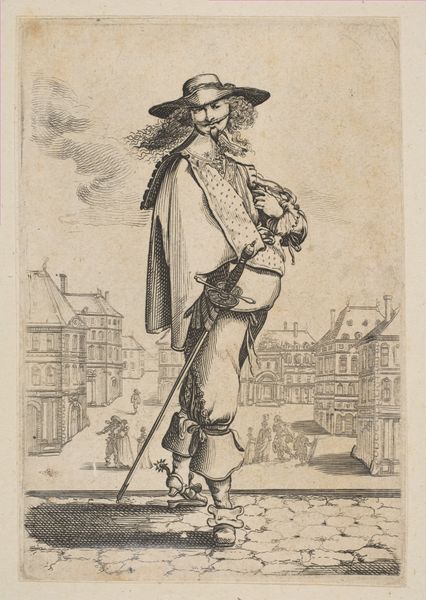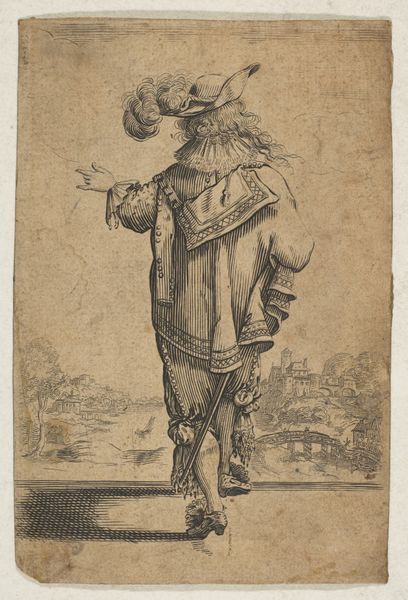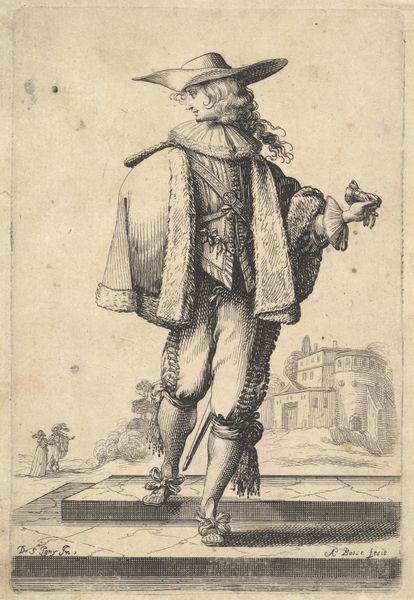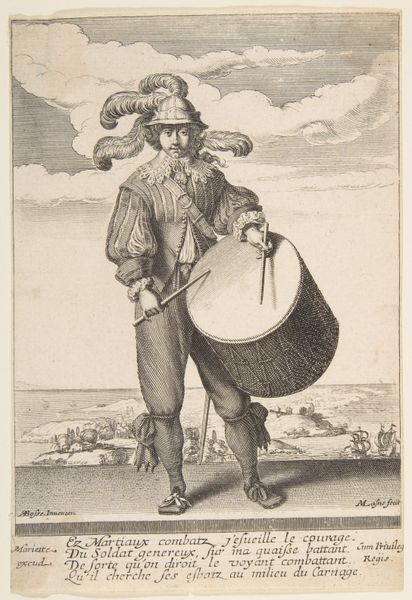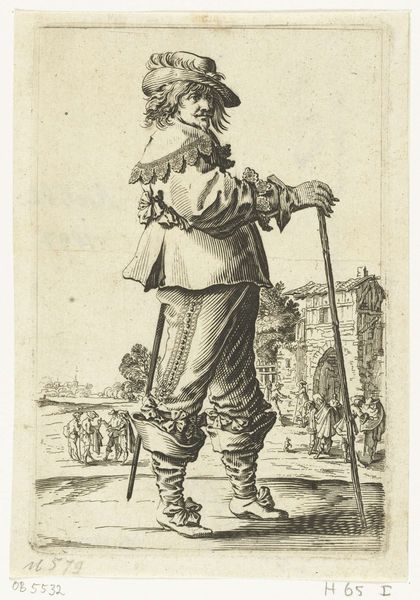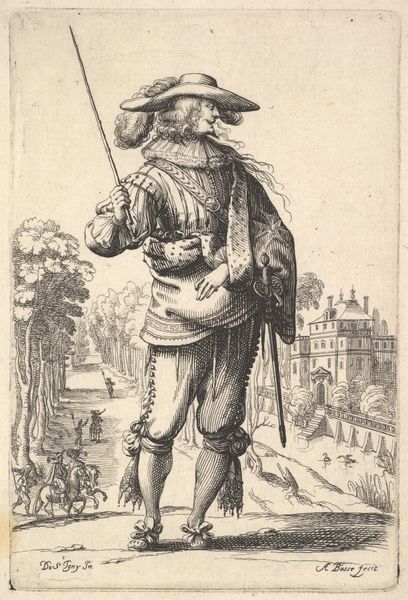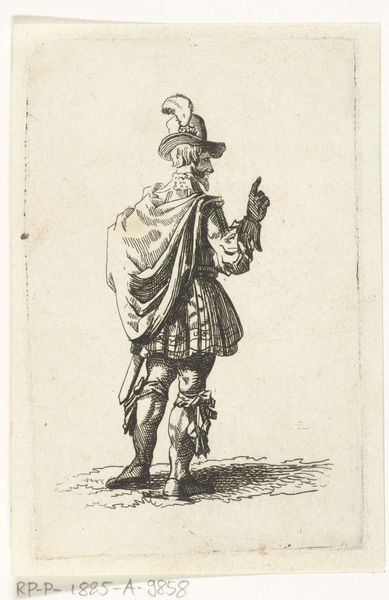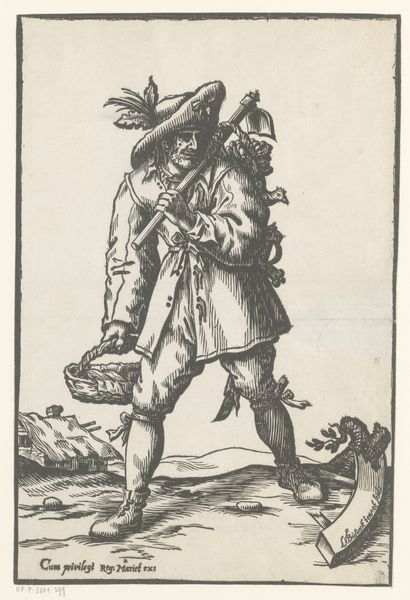
drawing, print, etching, engraving
#
portrait
#
drawing
#
baroque
# print
#
etching
#
figuration
#
history-painting
#
engraving
Dimensions: Sheet (trimmed): 5 1/2 × 3 9/16 in. (14 × 9.1 cm)
Copyright: Public Domain
Editor: We're looking at "The Amorous Widower," made around 1629, an etching, engraving, and print by an anonymous artist, housed at the Met. It shows a dapper man in elaborate dress, standing before a river scene. It feels satirical, somehow. How do you interpret this work? Curator: The key here, for me, is in understanding the processes and the social contexts they reflect. This isn’t simply an image of a man; it’s an image *made* through specific labor practices of the 17th century. The engraving and etching processes themselves – the careful, painstaking work required to produce the lines – were commercial operations. We need to think about the marketplace this print was intended for: who was buying these images, and what needs were they fulfilling? Editor: So, it's not just art, it's commerce? Curator: Precisely. Consider the clothing depicted: the lace, the puffed sleeves. The figure is literally *dripping* with material excess. The image would have been produced through the labour of an artist in response to specific material and visual cues of status that others laboured to achieve, either physically making those clothes, or through wealth acquisition. What's your initial sense of what the intended message of the artist might be, given the means of its production and what he depicts? Editor: Well, the title does suggest something… Maybe this fashionable widower, displaying all his finery, is meant to be ridiculed for being overly concerned with appearances after a loss? It does sound like you're focusing on the commercial aspects as a fundamental way of informing your interpretation, as it concerns labor, materiality, and status. Curator: Exactly. By centering our analysis on these material and production aspects, we get closer to understanding the social dynamics the artist may have been both participating in and commenting on. Editor: That really makes me rethink how I see art from this period. Thanks! Curator: It's all about considering what went into making the piece, beyond the artist's intentions!
Comments
No comments
Be the first to comment and join the conversation on the ultimate creative platform.



